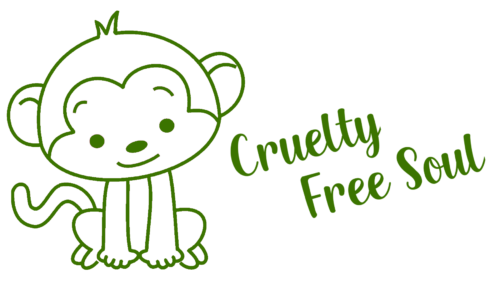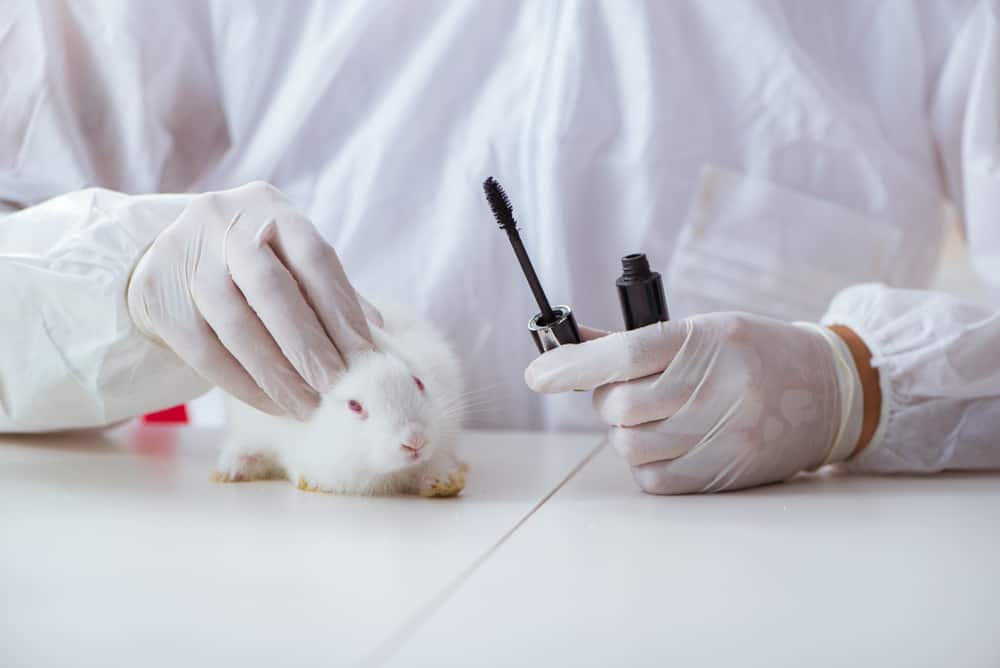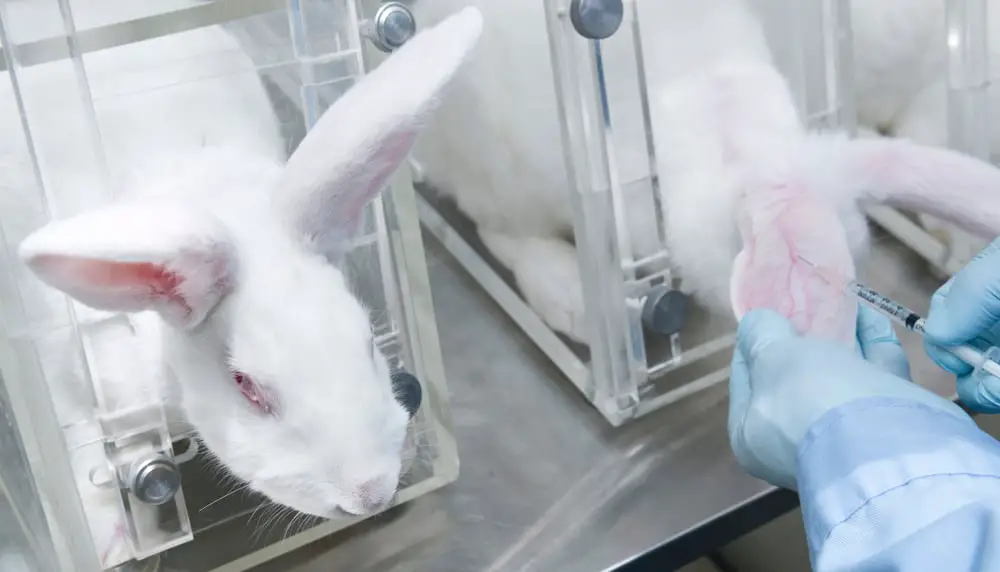It’s a thought we often push aside – but the truth is that people rely on animal testing across the world and the facts are shocking. Anything from military research to the popular cosmetics brands you find in a store is likely to conduct animal testing. The question Is – are all these experiments necessary?
A company may view the process of animal testing as necessary to ensure that their products are safe for people to use. However, the tests conducted on animals are cruel, cause suffering, and often lead to death.
Millions of animals are tested on, killed, and tortured every year to test products such as personal hygiene products, home cleaning supplies, and weapons research. Besides private companies, governments also use animals for testing and training.
Many Tests Are Harmful and Cause Unnecessary Pain
Different types of animal testing take place based on the intent of a research facility. Many tests are harmful to the animals and cause unnecessary pain. When scientists finish using the animals, they euthanize them for further analysis.
Many people believe that animal testing is a legitimate practice since it prevents the side effects from being passed on to the consumers. However, animal testing is not as safe as some companies may want you to believe.
Some animals, such as chimpanzees, are very close to humans when comparing DNA. Meaning that the animals can experience the same diseases as people, including cancers or various viral infections. Here are some types of gut wrenching tests scientists conduct.
Genetic Modification
Labs genetically modify animals for various reasons – usually to change how they are born or how they live. Many of these animals die at a very young age because they simply can’t survive the genetic mutations bred into them.
Reasons Why Animals Are Genetically Modified
Certain animals, like mice, are being bred with specific genes that promote cancer or other defects. These animals then become a part of research projects, such as medical trials. In addition to trying to cure human diseases, scientists also modify animals to prevent disease transmission. Common ones include the Avian flu or the Zika virus.
Livestock animals used for food production are often genetically modified too. The idea is to produce more desirable culinary characteristics, such as larger breasts on chickens. Hens may be modified to produce more eggs, or cows may be modified to produce more milk.
Alternatively, genetic modification is also used to benefit the farmers, such as reducing the time it takes for an animal to be fully grown – this often done with salmon. The goal is to provide more produce for less money.
Most genetically modified animals are riddled with congenital disabilities that lead to unnecessary suffering, and ultimately many deaths. We do not yet know the full effects that genetically modified animals have on our bodies and the environment.
Biological Research
Animal testing is most commonly used in medical research laboratories to help understand different conditions or diseases better. Researchers try and support animal testing by stating that it helps provide a better understanding of fundamental problems by providing data.
The data provided by this fundamental research enables scientists to understand how the body works and how it reacts to specific simulations and diseases. Unfortunately for the animals, they are tortured in the name of science.
Something scientists commonly do is impregnate rodents and then dose them regularly with toxic compounds. When they are close to giving birth, they kill the mother and fetus to analyze the toxin’s effects on their bodies.
This research is experimental and although it can provide some good insights into human responses – it’s often not enough to help find cures for diseases or symptoms. The simple truth is that no matter how many animals are tested, they will not replicate the same results as humans would because of differences in genetic makeup.
Animal Testing for Products
Companies state that they use animal testing to ensure that their products are safe for humans to use. But testing comes at the cost of animal cruelty and suffering.
Ironically, the companies’ main goal when conducting animal testing is to see how toxic products are and how corrosive their products are on living beings.
There are specific requirements that organizations and companies must follow to allow them to sell their products. Most products consumed or used for people or pets are regulated by the U.S. Food and Drug Administration in the United States.
Other countries have equivalents to the U.S. Food and Drug Administration, such as the European Medicines Agency. To pass the tests of these agencies, many companies decide to use animal testing.
Personal Hygiene Items Tested on Animals
Personal care products such as soaps, lotions, makeup and deodorants are also tested on animals. Usually, this means exposing animals to the product both internally and externally to see the physical reactions. These experiments are often conducted with no pain-killing medication.
Yes – many animals are hurt or killed in the name of beauty.
The toughest bullet to bite is that it’s fundamentally unnecessary. We really don’t need to conduct animal testing for cosmetic research anymore. There are over 7000 cosmetic ingredients that are already proven to be safe – so let’s use those.
If this doesn’t convince you, there’s also enough data out there to show you cruelty-free products might even be healthier for you. So, it’s better for you and the animals to ditch cosmetics that still test on animals.
Recently, a chilling short video was released by the Humane Society of the United States as a stand to ban animal testing on cosmetics – it’s worth a watch if you’re up to it:
Household Items Tested on Animals
Cleaning supplies are also tested on animals to see how their bodies react to the chemicals – both externally and internally. Animal’s eyes and skin are exposed to products to chemical-based products such as dish soap, bathroom cleaners, bleach, and laundry detergent.
Office supplies might be a surprising addition to this list. Office supplies such as the tape and sticky notes are often also tested on animals as they are created with chemicals that could be harmful.
Food Tested on Animals
It should come as no surprise that various food products are tested on animals to see if the ingredients are toxic. Some tests involve scientists performing surgery on the animals to see how the food affects their bodies.
At times animals are killed after an experiment to allow scientists to dissect the animal to see the adverse effects of a food product. Unfortunately, companies such as Nestle and Mars do not plan on stopping their animal testing programs any time soon. They see this testing as a necessity and effective.
Pet foods are tested in various ways on animals. Some companies such as IAMS have a horrible track record of torturing animals by performing horrific surgeries on them and keeping them locked up in cages.
However, there are cruelty-free options of pet food to choose from. Some companies are entirely transparent about their process, and they help fight against animal cruelty.
Animal testing is a cruel practice that harms innocent animals for superficial benefits. With recent advances in technology, animal testing is an out-of-date practice that needs to be removed as an option. There are now much more humane alternatives to animal testing.
If your mind is buzzing right now at the thought of all the foods you eat that could be tested on animals – we’ve got you covered in this article:
What Foods Are Tested on Animals?
Animals Are Tortured out of Curiosity Rather than Actionable Data
In product testing, animals have corrosive chemicals rubbed or poured in their eyes and skin to see how bad it will hurt the animal. Not only is this cruel, but these tests are often pointless since the lab testing experimenting on them is doing the test more out of curiosity rather than for actionable data.
When testing food and ingredients, food is often force-fed through a tube in excessive amounts. In some experiments, tubes were surgically implanted into animal’s stomachs. Once the experiments are concluded, the animals are often killed.
Mars, the creators of candy bars, are responsible for some nasty animal experiments. They would force-feed their ingredients on animals, and then they cut them open to see the effects on the animal’s body.
Animals can legally be burned, poisoned, or starved as part of a laboratory study, no matter how painful it may be. Often animals are not given any type of sedative and have to suffer through the cruel experiment.
Animals Are Getting Abducted for Testing
There is a large amount of black-market animal trading going that supports animal testing. Pets are stolen off porches, and free animals from websites like Craigslist are picked up for torture.
Stolen animals are often sold to class B dealers that provide testing animals to laboratories. Laboratories are required to buy from licensed dealers, but some dealers obtain their animals through questionable means.
However, most legitimate laboratories buy from breeders who specialize in laboratory animals. Mice and rats are the most common lab animals that are used in testing. But no matter how the animals are obtained, they will end up suffering.
Millions of Animals Are Tested on Each Year
Over 192 million animals are tested a year worldwide, with most animal testing occurring in China. The United States has the third highest, using over 17 million animals a year.
Canada isn’t far behind at number five. However – their testing isn’t nearly as invasive. You can find out more here: The 4 Most Important Animal Testing Facts About Canada.
It is no surprise that China takes the lead in animal testing since they require all products that come into their country to be tested on animals. That means that some companies who don’t do any animal testing in the United States may not be considered cruelty-free if they export to China.
Inhumane treatment of animals is still not banned in China and is still a common practice. However,
China has stopped requiring animal testing on domestic cosmetic products. There is also some hope for international brands remaining cruelty-free when exporting to China.
Tests are performed on these animals for various reasons to include education, research, and testing. Not all of these animals are tortured and are used for educational reasons such as studying habits.
Laws Encourage Animal Testing
The FDA has the power to mandate companies to conduct preclinical tests, which includes animal testing. These trials could include testing anything from diabetes medication to testing asthma medication.
There are laws in the United States that need to be followed while developing drugs, including human trials. To get to the human trial stage, labs will first test the drugs on animals.
The United States Government Funds Animal Testing
The government funds billions of dollars’ worth of animal testing experiments each year. American’s tax dollars are being used to torture animals. These tests include testing weapons to assist in combat medical training and both options are cruel beyond belief.
Until 2011 the United States military used monkeys as part of their chemical warfare training. Primates are still being used in biodefense labs to test against biological weapons.
In the past, the military used live pigs as part of their combat medic training for experience in a non-combat environment. After the pig was shot, it was the medic’s job tokeep it alive.
This process would repeatedly happen until the pig would eventually die. You would think that this type of testing was banned a long time ago, but this training was not canceled until Oct. 1, 2020. Roughly 8,500 pigs and goats were killed every year.
Your Charitable Donation May Go to Animal Testing
There are plenty of charitable organizations that fund animal testing for their research. They believe that animal testing goes a long way toward finding a cure for whatever disease or condition they research, such as bone cancer.
Their intentions might be good, but they are still causing animals to suffer. The sad truth is that this testing is unnecessary and ineffective.
Animal Testing Is Ineffective
Studies have shown that most tests performed on animals are often ineffective because even if a product works on an animal such as a rat or monkey, it does not mean the results can be replicated on a person.
Over 92% of all preclinical trials that pass on animals fail on people. That is a lot of death and suffering for not a lot of progress. These tests fail because they do not work or are deemed too dangerous to be tested on humans.
Technology Could Be Used as An Alternative to Animal Testing
With advances in technology, there are now alternatives that could be used instead of animal testing. There are ways to simulate a product's effects on a person by running projections through a computer program or other devices.
Another advancement in technology includes biological products such as using human cells grown in a lab to test products. Also, there are artificial bodies that could be used for practicing procedures. Here is a rundown of alternatives to animal testing.
Animal testing should be a thing of the past due to the technology now available to researchers. This technology is fascinating and could mean the end of unnecessary testing on animals.
Computer Software
Computer software and hardware is now advanced enough to conduct experiments by using virtual simulations. The simulations can help predict the outcome of tests. The data collected from these computer models help predict the outcome of experiments.
Thousands of tests could take place virtually during the time it takes to conduct one physical test. The data received from thousands of tests greatly outweighs the results of one physical test.
Computer simulations would be an excellent option for medical trials and weapons research from government-funded biodefense laboratories.
Lifelike Simulators
The days of cutting up animals during science class are over. There are now lifelike dolls that have artificial organs, blood, and can even breath. It provides a real-world experience without harming an animal. The dolls even include artificial blood.
Lifelike simulators can give medics and other medical personal experience performing procedures without harming animals. Implementing training on lifelike dolls instead of animals could save the lives of over 8,500 pigs and goats.
In Vitro
With this process, human cells are produced in a dish and are grown in a lab. Using In Vitro for experimental products, medicines and chemicals can be tested on human cells without harming people or animals.
One example is an artificial lung made of human cells that helps scientists test the effects of various chemicals that could be inhaled. You could use an artificial lung to see the damaging effects of household chemicals and biological weapons.
In Vitro gives researchers the ability to test products, chemicals, and medicines on human cells without suffering. Trying things on actual human cells provides results and data that resemble testing a real person. In turn, this provides excellent information, which could not have been collected by testing on animals.
Some States Have Banned the Sale of Animal Tested Products
In the United States, there are currently three states that have banned the sale of cosmetic products that have been tested on animals. States like California, Nevada, and Illinois are setting an excellent example for other states the emulate.
Some other countries, such as those in the European Union, have banned animal testing of cosmetics and ingredients altogether. The United States needs to strive to get to this point.
Cruelty-Free Choices
After doing some research, you may find that many of the products you use are tested on animals. Knowing that those products were created through suffering may make you think twice about purchasing them again.
The good thing is that in all fields, there are cruelty-free options that you could choose from. When you decide to go with a cruelty-free product, you are making the ethical choice. Animal testing is wrong, and we need to take an active role against it.
All you need to do is to complete some research on the products you want to use. Products will often advertise that they are cruelty-free. Other things to look for are trustworthy logos on product bottles – things like the Leaping Bunny, PETA Beauty Without Bunnies or Choose Cruelty-Free logos are all reputable.



